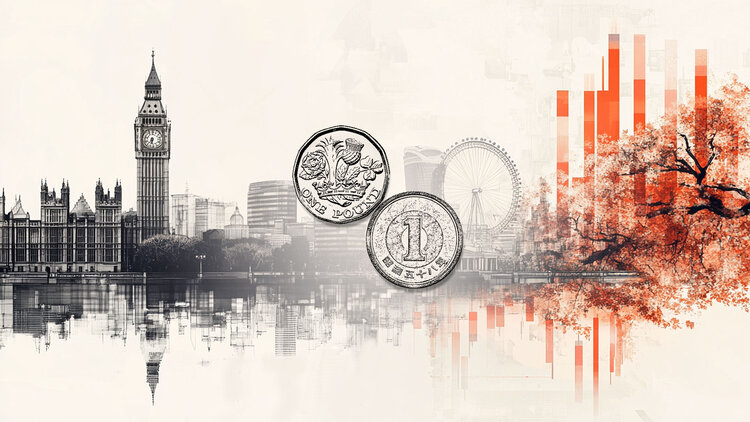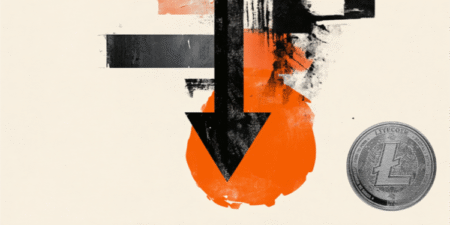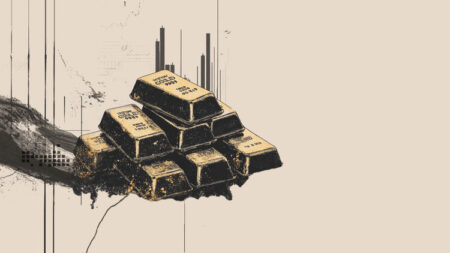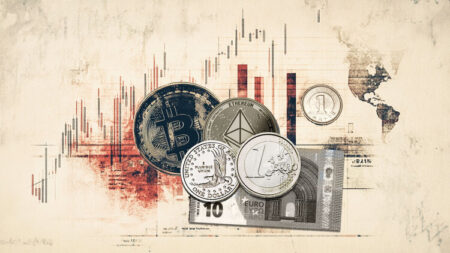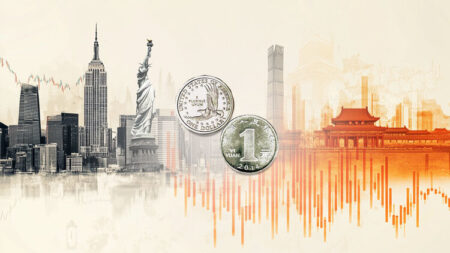- GBP/JPY gains slightly to near 199.30 as long-dated bond yields in the UK correct faster than in Japan.
- BoE’s Bailey acknowledged market expectations of uncertainty over further interest rate cuts in the remainder of the year.
- Investors await key UK Retail Sales data for July.
The GBP/JPY pair ticks up to near 199.30 during the European trading session on Thursday. The cross edges higher as the Pound Sterling (GBP) gains, following a decent recovery in demand for United Kingdom (UK) long-dated gilts.
Lately, both the GBP and the Japanese Yen (JPY) were facing a sharp selling pressure as long-term government borrowing costs in both the UK and Japan soared due to mounting debt concerns.
30-year UK gilt yields have corrected 3.3% from its recent highs of 5.75% to near 5.50%. Meanwhile, yields on 30-year Japan Government Bonds (JGBs) have also declined but at a slower pace. 30-year JGB yields are down 1.8% to near 3.25% from its all-time high of 3.3%.
Another reason behind strength in the Pound Sterling is comments from Bank of England (BoE) Governor Andrew Bailey, in a hearing before the House of Commons’ Treasury Committee on Wednesday, signaling uncertainty over the pace of interest rate cuts.
BoE Governor Bailey said, “There is considerably more doubt on how fast we can cut rates, and added market pricing suggests my message has been understood.” Traders see an almost 33% chance that the BoE will cut interest rates one more time in the remainder of the year, Reuters reported.
Going forward, investors will focus on the UK Retail Sales data for July, which will be released on Friday.
UK gilt yields FAQs
UK Gilt Yields measure the annual return an investor can expect from holding UK government bonds, or Gilts. Like other bonds, Gilts pay interest to holders at regular intervals, the ‘coupon’, followed by the full value of the bond at maturity. The coupon is fixed but the Yield varies as it takes into account changes in the bond’s price. For example, a Gilt worth 100 Pounds Sterling might have a coupon of 5.0%. If the Gilt’s price were to fall to 98 Pounds, the coupon would still be 5.0%, but the Gilt Yield would rise to 5.102% to reflect the decline in price.
Many factors influence Gilt yields, but the main ones are interest rates, the strength of the British economy, the liquidity of the bond market and the value of the Pound Sterling. Rising inflation will generally weaken Gilt prices and lead to higher Gilt yields because Gilts are long-term investments susceptible to inflation, which erodes their value. Higher interest rates impact existing Gilt yields because newly-issued Gilts will carry a higher, more attractive coupon. Liquidity can be a risk when there is a lack of buyers or sellers due to panic or preference for riskier assets.
Probably the most important factor influencing the level of Gilt yields is interest rates. These are set by the Bank of England (BoE) to ensure price stability. Higher interest rates will raise yields and lower the price of Gilts because new Gilts issued will bear a higher, more attractive coupon, reducing demand for older Gilts, which will see a corresponding decline in price.
Inflation is a key factor affecting Gilt yields as it impacts the value of the principal received by the holder at the end of the term, as well as the relative value of the repayments. Higher inflation deteriorates the value of Gilts over time, reflected in a higher yield (lower price). The opposite is true of lower inflation. In rare cases of deflation, a Gilt may rise in price – represented by a negative yield.
Foreign holders of Gilts are exposed to exchange-rate risk since Gilts are denominated in Pound Sterling. If the currency strengthens investors will realize a higher return and vice versa if it weakens. In addition, Gilt yields are highly correlated to the Pound Sterling. This is because yields are a reflection of interest rates and interest rate expectations, a key driver of Pound Sterling. Higher interest rates, raise the coupon on newly-issued Gilts, attracting more global investors. Since they are priced in Pounds, this increases demand for Pound Sterling.
Read the full article here







